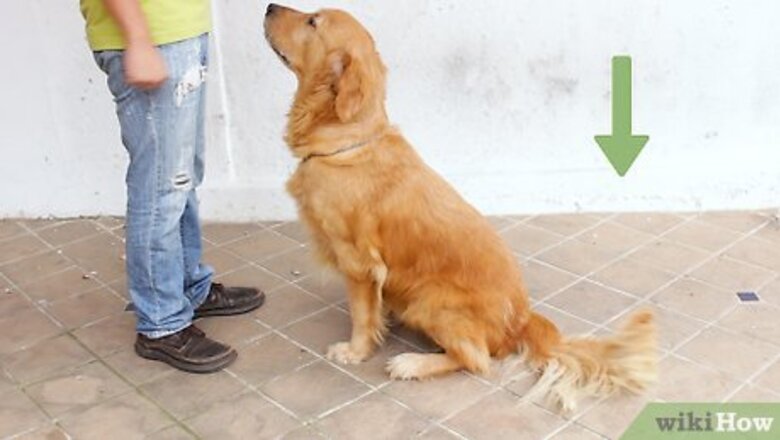
views
Getting Started
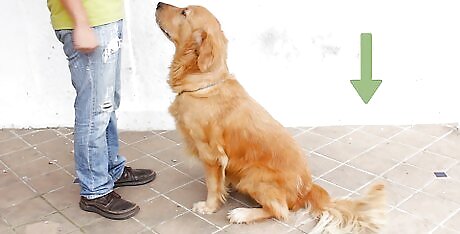
Get the dog to sit. It’s easier to train a dog to lie down after he already knows the “sit” command. When he’s in the sitting position, bring a treat close to his nose. If he gets excited and springs back up because of the treat, step back again and get him back into the sit position before continuing. Once he’s steady in the sit position, kneel or squat down to get closer to his level. To get your dog to sit, hold a treat above their nose. As soon as their butt touches the ground, give them the treat. Once they can do this reliably, start saying the word "Sit" to help them associate it with the action.

Lure the dog into a lying down position. While you’re squatting, move the treat down to the floor right in between his front legs. He should follow the treat to the floor with his nose. Once his nose is to the floor, bring the treat back out along the floor toward you. If the dog pops up while luring him down, quickly snatch the treat away. Then immediately ask him to sit again, and start the luring process over again.
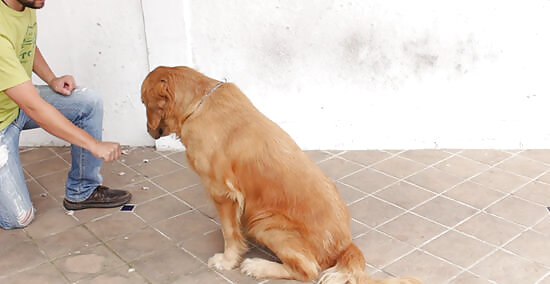
Put your hand gently on his shoulder. This should deter him from getting back up and walking toward the treat. As you inch the treat along the floor, he should glide down to the floor too. The entire motion of luring is an “L” shape with your hand.
Try this trick if he’s reluctant. Sit down in front of him with him on either your left or right side. Put your legs out along the floor, then raise them up so they look like a tent. Slowly move the treat down to the floor and then under your legs as he’s sniffing it. Move it out under your legs so he has to crouch down under them to get to it. Remember, don’t allow him to have the treat until he lies down. He will get confused about what it is you’re asking him to do. EXPERT TIP Sheri Williams Sheri Williams Certified Dog Trainer Sheri Williams is a Certified Dog Trainer and Behaviorist and the Owner of sheriwilliams.com, a business that specializes in teaching veterans how to turn their dogs into service dogs or emotional support animals to assist with PTSD. Based in the Los Angeles, California metro area, Sheri has over 20 years of dog training experience and also runs a general dog training practice specializing in rehabilitating dogs through positive reinforcement training techniques. She is certified by The Animal Behavior and Training Association. Sheri Williams Sheri Williams Certified Dog Trainer Use treats to reinforce obedience commands. Use dog treats when teaching basic commands like sit, stay, down, and heel. Say the word and reward them with a treat when they do the correct action. Doing this will help them connect the word with what you want them to do.
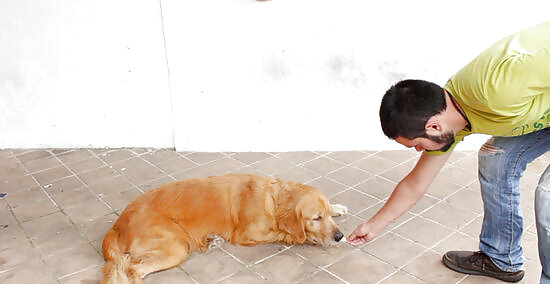
”Catch” him in the behavior. If your dog is particularly resistant to the luring technique, you can reward “catching” him lying down on his own. Simply stand with your dog in a room and wait for him to lie down. The instant his body hits the floor, say “down,” use your clicker and throw a treat a few feet in front of him. He’ll have to stand up to go get the treat, so then you just wait for him to lie down again. Repeat the sequence until he seems to start connecting “down” with what you want him to do.
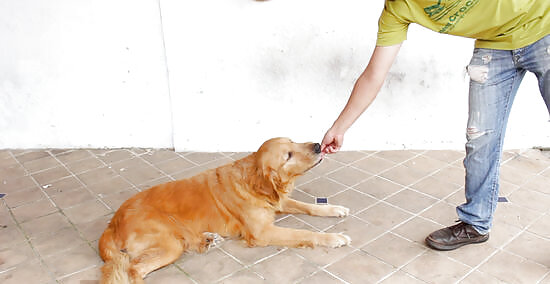
Praise the dog and let him eat the treat immediately when he lies down. Say “Yes!” or “Good dog!” and then give the treat (or click the clicker). The moment his elbows, rear end, and belly touch the floor, that’s when you give the praise and the treat – not before!
Add the cue “Down”. Once your dog knows how to lie down, start saying the word "Down" each time you have them lie down. This is very important to do absolutely every time, because eventually you will train the dog to lie down without any treats and only with this command.
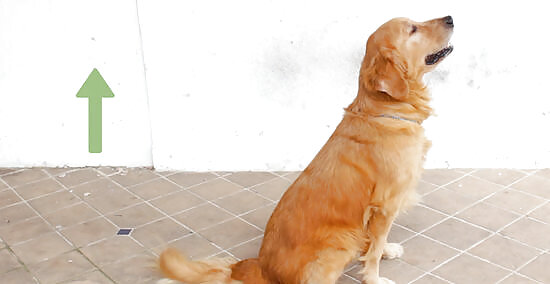
Give a release command. You can say, “Ok!” or “Up!” and then clap your hands or take some steps backward to get him to stand up.

Repeat. After he stands back up, repeat these steps immediately 5-15 times after he gets it the first time, depending on what his attention span allows. This much repetition in the beginning will help him to remember what to do.
Reinforcing the Lie Down Command
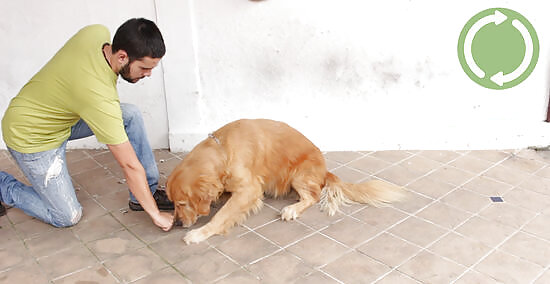
Practice the steps above twice per day. Try to keep each training session short and simple, about 10 minutes each time. Once he gets it easily each time, you’ll be ready to move onto gradually removing the treats. Some dogs will be ready to move on after only a day or two of those steps; others will need more practice.
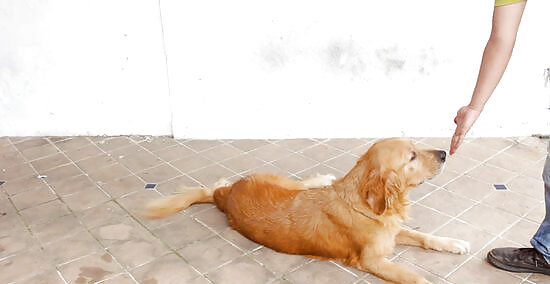
Start using an empty hand but still giving a treat. This teaches your dog to know what he’s expected to do without having to actually see the treat. Practice saying “down” and luring him down to the floor, using the same “L” motion, but without a treat in your hand. Keep the treats nearby and give him one as soon as he lies down and stays, and be sure to give praise. If he refuses to lie down without seeing a treat, you can try this “fake out” trick: lure him into the lying down position with a treat just like in the first section quickly 4 times in a row. The last time, quickly do it without the treat. He will probably lie down, thinking you have a treat. As soon as he does, say your praise (“Yes!” or “Good dog!”) and open your hand to show him there’s no treat. Then give him 3 surprise treats. Start again practicing without the treats and only using the hand signal. Practice the empty hand method for 10 minutes a couple of times each day for a couple of days.
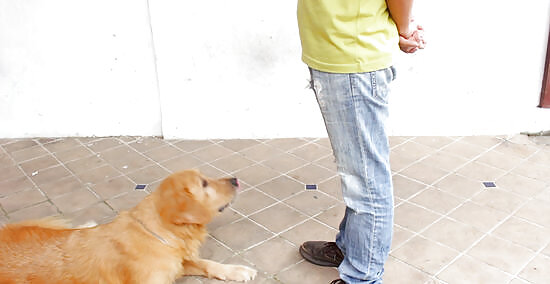
Start shrinking the hand signal. After a couple of days of practicing using an empty hand, you’re ready to also start shrinking your hand signal. Instead of guiding your dog all the way to the floor with your hand, say “down” and guide him almost to the floor. Stop your hand an inch or two above the floor and move it out. As soon as he lies down, deliver the praise and the treat.
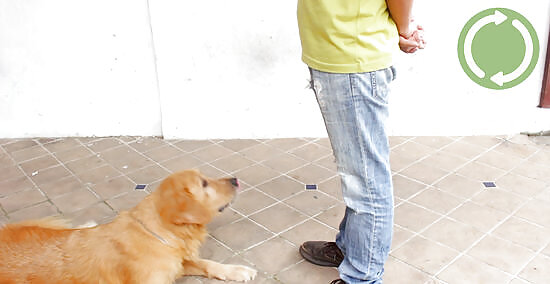
Continue shrinking the hand signal. Every couple of days, make your hand signal smaller and smaller. You will eventually have to bend over less, and finally all you’ll need to do is say “down” and point to the floor while standing up. Continue delivering treats and praise each time he lies down for you on command.
Take it on the road. Practice your dog’s new skill in different locations so he’ll be able to do it anywhere you ask him to. Start by using different rooms in your house, then go outside around your house when no one else is around. Increase the level of distractions gradually. Try practicing while you’re out on a walk where there’s little distraction, then work up to environments where there is a lot he’s distracted by.

Start using fewer treats. After your dog can lie down in various locations and under various circumstances, start giving less treats. Always give praise and a pet though! You can start by only giving treats for the fastest downs, letting the slower more reluctant ones just get a praise and a pet.
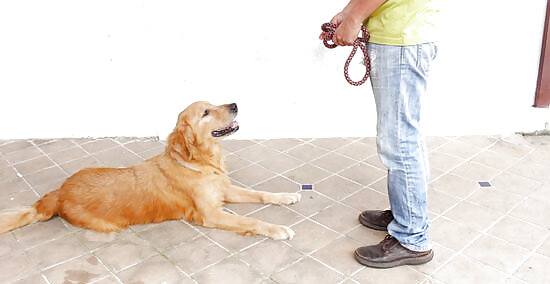
Give “life rewards”. Start asking your dog to lie down before different fun activities, like before you put on his leash to go for a walk, before you give him dinner, before you throw him a favorite toy, before he’s allowed to meet new people, or before you let him off leash to play. Dogs like having a job to do! And when he discovers that lying down gets him all kinds of rewards, he’ll be more likely to do it as soon as you ask.
Learning Some Dog Training Basics

Keep training sessions short and sweet. Like kids, dogs don’t have the longest attention spans. There’s no definite rule, but each training session should last about 15 minutes or less. Within that session, you can work on one skill, or switch between a few different skills. Spend those 15 minutes practicing new skills, but keep old ones polished by doing single repetitions at convenient times throughout the day.
Use consistent, positive reinforcement. If you like a behavior that your dog does, reward it. If you don’t like it, don’t reward it. For instance, if you sometimes pet your dog when he jumps up, but sometimes you yell at him, he’s bound to get confused about how you feel about the behavior. Don’t bury words like “sit” and “down” in complex sentences. When training, decide what word you will use for the action that you want, and use it clearly and consistently every time. Negative reinforcement doesn’t work! If you hit your dog or yank his leash when he does something you don’t like, he may simply learn that you are scary and not connect his behavior with how he got hurt. It’s much easier to focus on what you want your dog to do (if he starts doing something you don’t like, you tell him to sit) than on what you don’t want him to do.
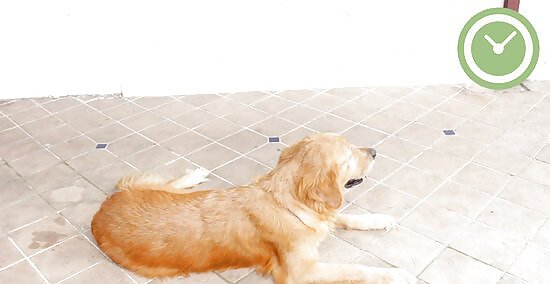
Work on one part of a new skill at a time. Many skills have complex parts. For instance, if you’re teaching your dog a solid sit-stay, you’ll need to work on having him stay until you release him, then staying while you move away from him until you release him, then staying while you move away from him with distractions until you release him. Start with the more basic part of the skill, and then move upward in complexity for each level of mastery.

Practice everywhere and with everyone. Dogs, unlike people, don’t automatically take new information with them everywhere. They learn very specifically and don’t always apply their knowledge to different places and situations. So if you only practice a new skill in the kitchen, you’ll have a wonderfully kitchen-trained dog. While you may want to start a new skill in a quiet room of your house, move to different locations as soon as he starts getting it. Train your dog in different rooms of your house, in your yard, at different stops during your walks, and at friends’ houses.
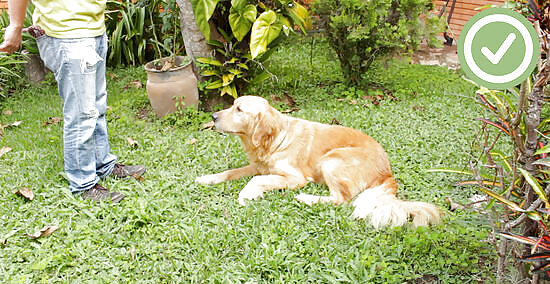
End on a good note. It’s important to stop a training session before either one of you gets frustrated, tired, or bored. Also, remember to let your dog be a dog. This means that you should have patience with dog training, and accept that your dog has certain traits and behaviors (chewing, mouthing, roughhousing) that are just part of being a dog. You can deter some behaviors by not rewarding them, but this takes time and patience. If you are trying to prevent certain undesirable behaviors in your dog (like digging through the trash can), consider what you can do to prevent the behavior (like putting the can in a place where the dog can’t get to it) instead of setting unrealistic expectations on him.



















Comments
0 comment